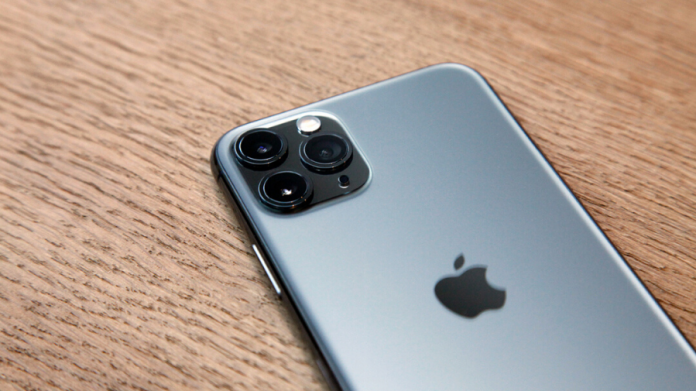Ever since Apple launched its new flagship smartphone this year, iPhone 11 Pro marked a new beginning for the American technology conglomerate. What we already know is it has been an amazing edition that delivers finer photo quality than its previous iteration. The triple-camera smartphone (with A13 Bionic) offers best-in-class performance in a sleek and compact design. But ever since its advent, a lot has been talked about iPhone 11 Pro camera! Thanks to Apple, which launched the iOS 13.2 update, and with that, users got their hands on Deep fusion, one of the best-in-class technology that Apple has managed incorporating with its new iPhone 11 Pro and Pro Max.
Now that Deep fusion is all for real, here’s taking an opportunity to give an insight into the new Apple technology for smartphone photography.
Table of Contents
An In-Depth Explanation of Deep Fusion

Smartphones can never be the ultimate replacement to professional cameras, but kudos to Apple, which walks the extra mile in making its phone camera feature better, with each new edition. Talking about Deep Fusion, this feature is an in-thing for iPhone 11 Pro and iPhone 11 Pro Max. It runs the iOS 13, out of the box.
iPhone 11 Pro camera setup has gone through a whole lot of improvements including the improved sensors, night mode, ultrawide-angle lens, and even the slow-motion selfies. Deep Fusion is an improvement that didn’t come up with the flagship smartphones out of the box. When Apple released iOS 13.2 version on October, iPhone 11 Pro users got hands on this new feature.
To elucidate with a demonstration, the American tech conglomerate used multiple samples of people with sweaters (one such clothing item that would frequently lose details in the photos). The sweaters alongside other items in shots were taken with Deep Fusion tech. And much to the knowledge of tech geeks, more detailed images are there with Deep Fusion that retained natural textures.
How does Deep Fusion Work?
When the feature gets activated on your phone, the iPhone applications constantly buffer in the background. In the buffer, the camera will take four standard explosion shots, four short exposure shots alongside a final long exposure shot, once the phone’s shutter button is pressed. The iPhone blends the finest elements of short exposure shots, thereby offering a reference frame.
After this, it blends the standard exposure shots alongside the long exposure shot making it a synthetic long frame. Then, the iPhone 11 Pro camera processor will go pixel by pixel & choose the finest elements from both reference and synthetic long frame in order to create detailed images. It enhances the appearance of the hair, sky, skin, and textures like the fabrics. All of these happen with a second of pressing the shutter, so it’s a great feature.
So, when you snap a shot initially, deep fusion tech will immediately start post-processing images in the album. By the moment you open the camera roll, it would take a glimpse of it and will have the necessary effects implemented. Thanks to the A13 Bionic chip, this made this technology possible and real, thereby enhancing the iPhone 11 Pro camera features! It’s the strongest processor incorporated into a commercial phone.
Does Deep Fusion Technology Make a Huge Difference?

American tech conglomerate has managed to make its fans surprised with no stones unturned. It has managed to bring an advanced tech to omit a whole lot of steps into just one press of the shutter. So, in a tech world where many smartphone giants are managing to make greater strides to improve and sharpen the quality of the image, does incorporating Deep fusion tech with iPhone 11 Pro camera really make a difference? The answer is a big yes, possibly some of the time.
Deep fusion technology, as per Phil Schiller’s description, is the computational photo mad science. It adds more sharpness sans the undesirable facts that commonly is associated with normal image sharpening. If you’re an iPhone Pro user, you can check out how clearly Deep fusion gives a more detailed image than the normal photograph.
What’s more notable is that a shot via Deep fusion tech would give you a look at an image that doesn’t have dark pixels that are out of line. The line will get straighter and finer. Deep fusion works its magic with a more defined image quality. Apple has finely built one such technology where photography gets way better. Deep fusion tech claims what it does – designed for medium to low light, so it hits amazingly right in the middle of smart HDR and Apple’s new night mode.
But, if you want to dramatically change your quality of the image that your take via the iPhone 11 Pro camera, you possibly haven’t yet paid much attention to the multi-frame capture methods that are recently wide-spread in the industry. The technique might come up amazingly; the result doesn’t differ too much in most of the cases.
How do know whether or not it’s working?
In most of the cases, you would not be able to identify the technique of how deep fusion works. On paper, Apple has taken a massive leap taken for mobile photography. But, as already stated above, the difference is difficult to notice in most cases. Deep Fusion tech is noticeable in the objects with textures. Suppose you’re wearing woolen clothes, the furry items will be noticeable. More to add, a close-up shot of food items will also give you a detailed understanding of how it works.
Is it available on your iPhone?
Deep Fusion is compatible with iPhone 11, 11 Pro Max, and 11 Pro. The older versions of Apple such as the iPhone X and iPhone XS will not feature the A13 Bionic chip. These models would also not be available with this update. So, if you’re using iPhone 11, iPhone 11 Pro and Pro Max, you can use this amazing camera technology.
Now that you have an insight Deep Fusion tech, use it with your iPhone 11 Pro camera and notice the difference yourself!












